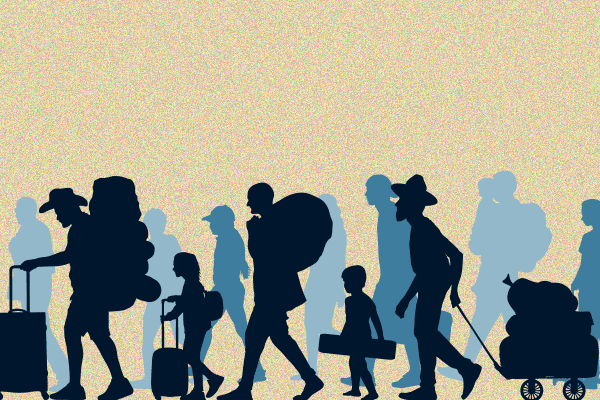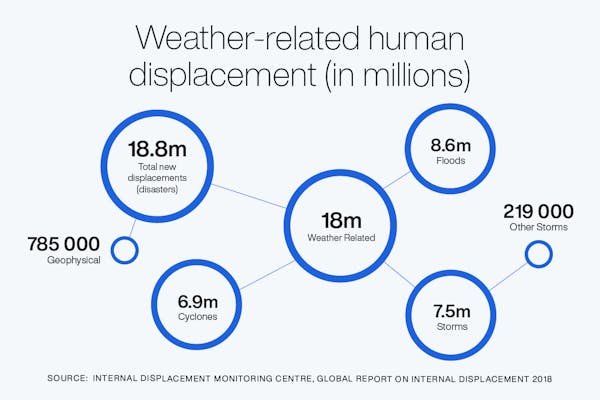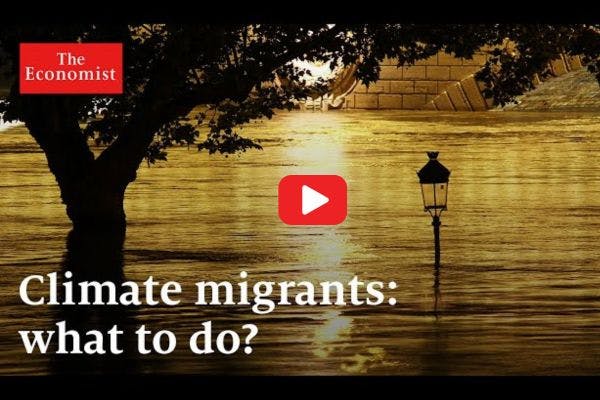Navigating a world transformed by climate-induced migration
Climate change is already forcing a lot of people from their homes, and it’s only going to get worse. Let’s take a Deep Dive.
🆘 Climate refugees, or climate migrants, are people who are displaced from their homes by the impacts of climate change.
📈 There are a lot of them, and as the climate crisis intensifies, the number is only heading in one direction.
🤔 It can be hard to definitely identify whether someone’s a climate refugee or not. It’s not always clear what a person’s motivations for moving are or how several different motivations intertwine.
BY THE NUMBERS

21.5 million An average of 21.5 million people were displaced each year by weather-related events between 2008 and 2016, according to the UNHCR.
30.7 million By 2020, that number had risen to 30.7 million—three times more than the number displaced by war and violence.
1.2 billion By 2050, the total number of displaced people could rise to as many as 1.2 billion.
260 million The number of people living in coastal areas at high risk of flooding has risen from 160 million to 260 million in the past 30 years.
95% Climate and conflict displacement often dovetail: according to the UNHCR, 95 percent of all conflict displacements in 2020 were in countries at high risk from the effects of climate change.
QUIZ
South Asia is a climate refugee hot spot, particularly low-lying, flood-prone Bangladesh. How many climate refugees were there in the region at the end of 2020, according to a study from ActionAid and Climate Action Network South Asia?
A. 8 million
B. 13 million
C. 18 million
Scroll to the bottom of the email for the answer.
Did you know?

Climate refugees might seem like a purely contemporary phenomenon, but the term was coined as early as 1985, by Essam El-Hinnawi of the UN Environment Programme, who defined them as people “forced to leave their traditional habitat, temporarily or permanently, because of marked environmental disruption”.
THE EDIT
🗺️ Beyond borders. The challenges of climate refugees might force us to rethink the way we view national borders.
🛂 Respect is due. The term “refugee” could itself be problematic.
🌏 Close to home. Several of the most affected countries are in Asia.
🌏 Open arms. But so are several of the countries that accept the most refugees.
WATCH
Richer nations need to be planning for increased climate migration so they can cope with its impacts—but most aren’t.
THE FULL PICTURE

Floods, storms and cyclones are the biggest culprits when it comes to climate-related displacement.
KEY PLAYER
Filippo Grandi
As the United Nations High Commissioner for Refugees, Filippo Grandi leads the fight to mitigate the impact of climate-related displacement. “We cannot leave millions of displaced people and their hosts to face the consequences of a changing climate alone,” he said at last year’s Cop27 conference, urging delegates to help communities prepare for its effects.

HONOUREE TO KNOW
Woo Qiyun
Climate activist Woo Qiyun is the brains behind the Instagram account @TheWeirdandWild, a repository of quirky doodles and infographics that showcases complex climate issues in an engaging, non-intimidating way. In 2022, she addressed the impact of youth activism at Cop27, and had her illustration on the SG Green Plan adorn pins and given out at the Singapore Pavilion at the global event.

ONE FINAL THING

If all this seems a bit gloomy, here’s a more positive view: migration could be humanity’s way out of the climate crisis.



